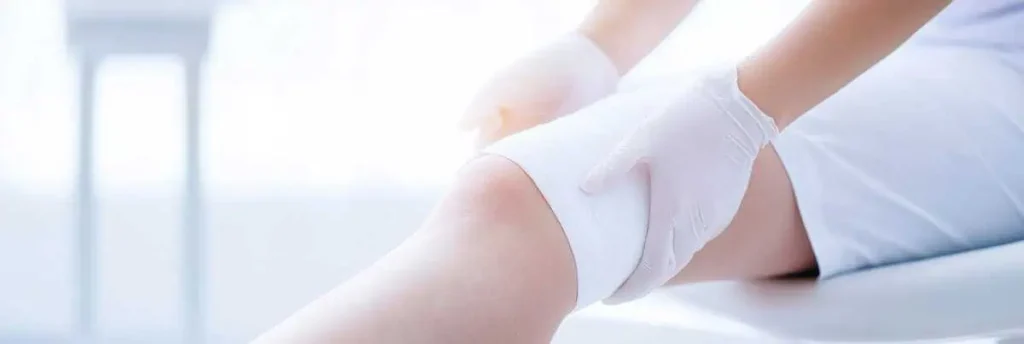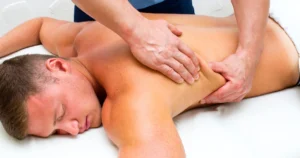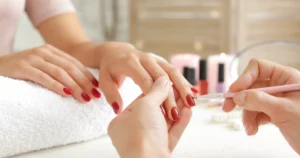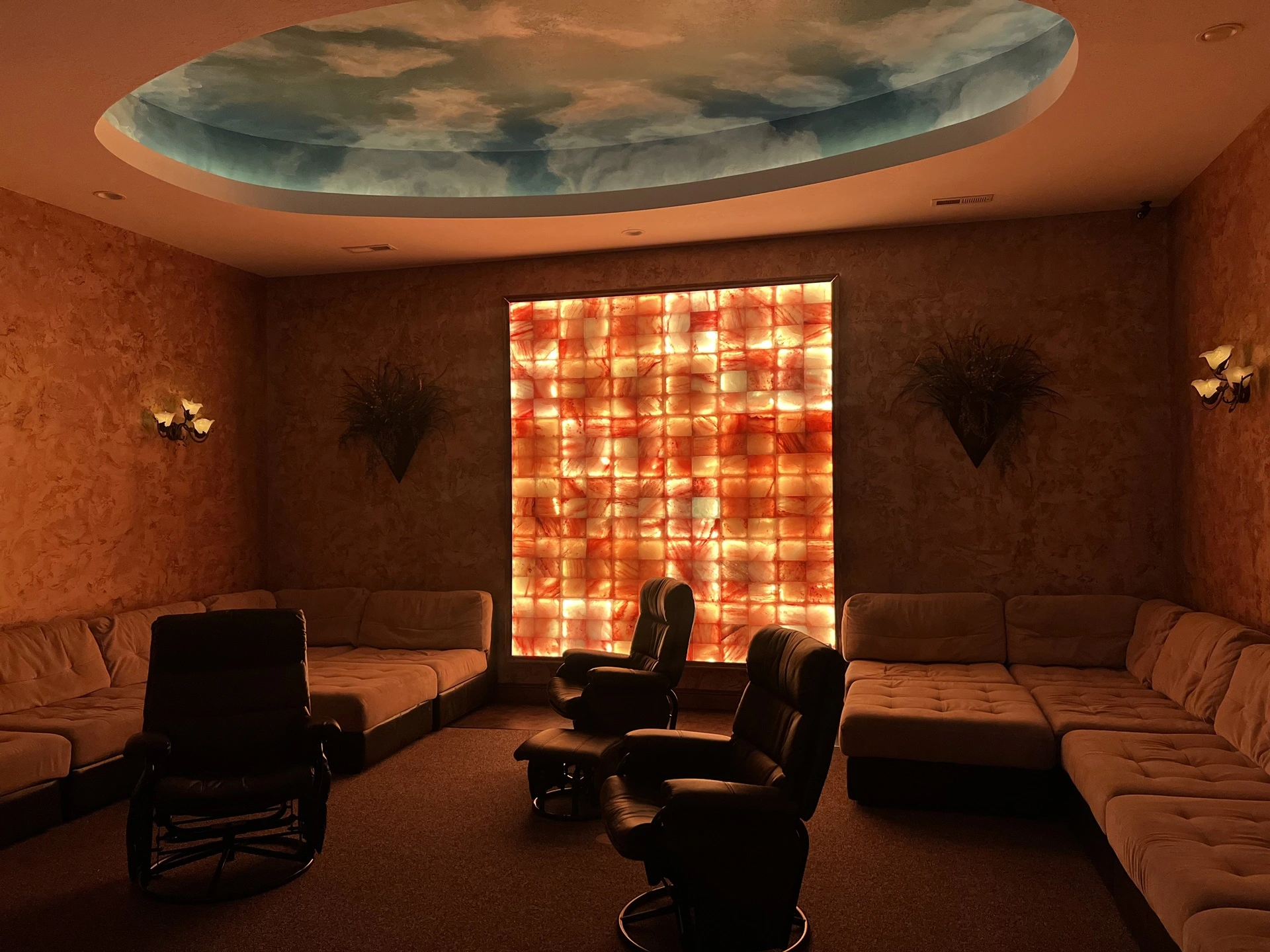Compression Therapy is a commonly recommended approach to manage various health conditions involving poor circulation, swelling, and discomfort. This therapy can enhance blood flow and lymphatic function by applying consistent yet gentle pressure to specific body areas, possibly supporting the healing process. Many people find that Compression Therapy Benefits extend to aiding in muscle recovery, reducing chronic pain, and supporting overall wellness. This article explores five conditions that frequently improve with Compression Therapy, along with an overview of the options for individuals interested in pursuing this form of care. If you live around OGDEN, UTAH, you can also learn about accessing Compression Therapy in OGDEN, UTAH. The following information is provided by New Day & Med Spa to help you understand how Compression Therapy works and what conditions can improve with consistent use.
Be treated at New Image Day Spa to the refreshing effects of compression therapy. Comfortably and individually fitted, these compression garments gently caress your circulatory system, optimizing blood flow and lymphatic drainage. Step into a world of renewed vitality as we help you address various conditions, from varicose veins and edema to sports recovery and post-surgical care. Experience the power of compression therapy and emerge with a renewed sense of well-being.
Understanding the Basics of Compression Therapy
Compression Therapy relies on specialized garments that apply pressure to targeted areas, such as the legs, arms, or trunk. This pressure can be constant or intermittent, depending on the specific type of device or garment used. The goal is to support veins and lymphatic vessels, reducing the buildup of fluid that can cause swelling and discomfort. Many Compression Therapy Benefits include decreased inflammation, improved mobility, and potential relief from ongoing pain.
When blood is not flowing properly, it can pool in the legs or other areas, leading to varicose veins, edema, and other complications. Compression Therapy reduces the diameter of veins, allowing blood to flow back to the heart more efficiently. Similarly, encouraging better lymphatic drainage can support recovery from injuries or surgeries. As more people learn about Compression Therapy for Swelling and related concerns, this approach is becoming a standard addition to many treatment plans.
Condition #1 – Lymphedema
Why Compression Therapy for Lymphedema Matters
This condition results from an impaired lymphatic system, leading to fluid accumulation, swelling, pain, and potential skin problems. It may happen after cancer treatments that involve the removal or damage of lymph nodes or be a congenital issue. Compression Therapy for Lymphedema is often recommended to help reduce the buildup of lymphatic fluid and maintain a more comfortable level of pressure in the affected area.
Common Approaches to Lymphedema Management
A well-fitted compression garment can gently press on swollen tissue, encouraging fluid to move out of the area and return to the body’s circulation. In some cases, manual lymphatic drainage (a specialized massage) is combined with Compression Therapy for an even more positive impact. Wearing compression garments consistently can also support daily activities by reducing pain and heaviness. While not a cure for the underlying cause of lymphedema, regular use can help manage symptoms and prevent complications like infections or skin breakdown.
Condition #2 – Chronic Venous Insufficiency and Varicose Veins
How Compression Therapy Eases Leg Discomfort
Chronic venous insufficiency is when the veins in the legs have difficulty sending blood back toward the heart. As a result, fluid may pool in the lower limbs, leading to swelling, varicose veins, and aching. Compression Therapy Benefits individuals with this condition by applying external pressure on the veins, promoting more efficient blood flow. This external pressure may decrease the likelihood of fluid accumulation in the legs.
Compression Therapy for Swelling and Varicose Veins
When varicose veins appear, they can be both uncomfortable and cosmetically concerning. Compression Therapy may help prevent varicose veins from worsening and sometimes reduce mild discomfort. Physicians often prescribe compression stockings for daily use, supporting better circulation at work, during travel, or general daily activities. Compression garments can reduce leg discomfort and swelling by assisting the body’s circulatory system.
Condition #3 – Sports Injuries and Muscle Pain
Compression Therapy for Muscle Pain Relief
Athletes and individuals who exercise regularly can experience muscle soreness due to micro-tears, lactic acid buildup, or overuse. Compression Therapy for Muscle Pain can help the body recover quickly and with less discomfort. Compression garments or wraps may enhance blood flow to tired muscles by delivering consistent pressure, removing metabolic waste products, and delivering fresh oxygen and nutrients.
Supporting Recovery and Reducing Inflammation
Compression Therapy Benefits are also seen in people with sprains, strains, or other sports-related injuries. Improved blood circulation and control of inflammation can lead to quicker healing. Some individuals find that wearing compression sleeves or using Intermittent Pneumatic Compression (IPC) devices improves comfort during and after physical activity. Adopting these tools as part of a well-rounded recovery plan may support overall athletic performance in the long run, while also helping to reduce the chance of further injury.
Condition #4 – Post-Surgical Recovery
Keeping Swelling Under Control
Swelling after surgery is a common issue that can delay healing and make movement more challenging. Compression Therapy for Swelling in post-surgical patients is often recommended to limit fluid buildup and encourage better blood flow in the affected area. Whether the procedure was orthopedic or related to another medical specialty, many practitioners advise wearing compression garments once the patient is cleared.
Encouraging a Healthier Healing Environment
Beyond reducing swelling, Compression Therapy can help minimize discomfort, potentially lowering the need for certain medications. By stabilizing the surgical site and maintaining consistent pressure, the affected tissues can benefit from improved circulation. This environment can lead to a more comfortable recovery period and, in some cases, less scarring. Patients should follow their healthcare provider’s recommendations regarding how long and often to wear compression garments after a procedure.
Condition #5 – Chronic Pain Relief
Managing Persistent Discomfort with Compression
Some people experience chronic discomfort in their limbs or joints due to long-term conditions such as arthritis, fibromyalgia, or other systemic issues. Compression Therapy for Chronic Pain Relief offers a gentle method to help reduce inflammation and provide a sense of support. The applied pressure on aching areas can help lessen soreness and promote stability.
Daily Living with Compression Therapy
In many cases, consistent use of compression garments can make everyday tasks more manageable. When pain is minimized, walking, standing, or other forms of movement can feel less strenuous. While Compression Therapy is not a replacement for pain management solutions, it can be an important component of a comprehensive approach that also includes medication, exercise, and other therapies recommended by a healthcare professional.
Types of Compression Therapy
Graduated Compression Stockings
Graduated Compression Stockings are among the most commonly prescribed devices for conditions affecting the legs. They apply greater pressure around the ankles and gradually reduce it up the calf or thigh. This design encourages blood and lymph fluid to flow upward, making them an excellent choice for Compression Therapy in OGDEN, UTAH, for those who spend extended hours on their feet or have circulatory issues.
Compression Sleeves
Compression sleeves are typically used for the arms or legs to support muscles and joints during physical activity. They can help with muscle soreness and mild swelling. Many athletes use sleeves during training to provide extra support and reduce the chance of strain or discomfort.
Specialized Garments
Certain health conditions call for specialized compression garments that target specific problem areas, such as the torso or chest wall. Patients recovering from mastectomy procedures, for example, may receive specialized compression garments to help reduce fluid retention in the upper body. These garments come in various sizes and configurations, allowing for a fit that aligns with individual body shapes.
Elastic Bandages
Elastic bandages are simple and cost-effective. They can be wrapped around a joint, limb, or other body parts to apply pressure. Healthcare professionals often recommend these bandages to manage swelling after an injury or surgery. The bandage tension can be adjusted to different degrees, though learning the correct wrapping technique is essential to avoid overly tight or loose application.
Multi-layer Compression Bandaging
Multi-layer compression bandaging involves wrapping an affected area with two or more layers of bandages. These layers might include padding, a short-stretch bandage, and a cohesive top layer. This approach can offer more consistent pressure over time, benefiting conditions like lymphedema or chronic venous insufficiency.
Intermittent Pneumatic Compression (IPC)
IPC devices use inflatable sleeves that are periodically filled with air to apply controlled pressure in cycles. Individuals slip their arms or legs into the sleeve, and the machine inflates and deflates the compartments. This approach helps move fluid away from the tissues and supports better blood flow. IPC can be especially helpful for individuals who are less mobile or who have more severe swelling that requires automated pressure cycles.
Conclusion and Call to Action
Compression Therapy has a place in managing a range of conditions, from swelling due to lymphedema and varicose veins to muscle aches from sports activities and chronic pain. Whether the need is to control fluid accumulation, provide support during injury recovery, or reduce ongoing discomfort, Compression Therapy for Muscle Pain and other forms of distress can have meaningful results. Adopting the right garment or device, combined with a healthcare professional’s supervision, can optimize how this approach works for each person’s unique needs.
If you or someone you care about is looking for Compression Therapy in OGDEN, UTAH, it may be time to seek professional guidance. New Day & Med Spa is here to help you learn more about the potential advantages of Compression Therapy for Swelling, Lymphedema, and Chronic Pain Relief. The qualified staff at New Image Day Spa can offer personalized guidance and ensure compression garments fit properly. This helps maintain comfort and effectiveness as part of a customized treatment plan.
Start Healing with Compression Therapy today. Contact us at New Day & Med Spa to inquire about available services and to schedule a consultation. Our team is ready to support you in improving your circulation, managing pain, and addressing swelling or other lingering concerns. By including Compression Therapy in your health and wellness strategy, you may experience better mobility and daily function. A comprehensive plan that integrates compression garments, healthy exercise, and professional medical advice could be an important step toward more comfort and well-being.




